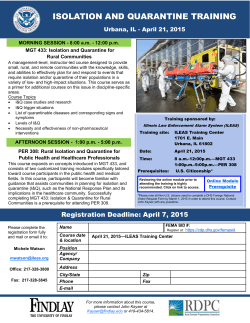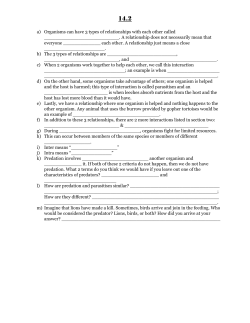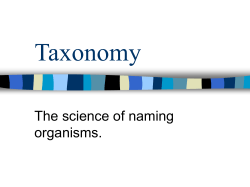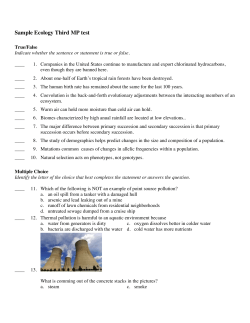
Unit 5 Evolution Study Guide 1. Genetic variation is considered to be
Unit 5 Evolution Study Guide 1. Genetic variation is considered to be ______________. 2. What is a gene pool? 3. When a population is in Hardy-‐Weinburg equilibrium, the population is ____________________. 4. The 5 conditions that must be met in order for a population to be in Hardy-‐Weinburg are: 5. Name two vestigial structures in the human body. 6. The fin of a penguin and the fin of a goldfish are considered __________________ structures because they have the same_______________ but different _________________. 7. The flipper of a dolphin and the arm of a human are considered __________________ structures because they have the same ________________ but different ____________________. 8. Examine the picture of embryos to the right. How do scientists use this to study evolution? Circle the two columns of organisms that look the least like the others in stage 2. Put a box around the two columns that appear to be the most closely related. 9. Some Central American Acacia species have hollow thorns and pores at the bases of their leaves that secrete nectar. These hollow thorns are the exclusive nest-‐site of some species of ant that drink the nectar. But the ants are not just taking advantage of the plant—they also defend their acacia plant against herbivores. This system is probably the product of _________________. 10. Closely related species will show similarities in their _________ sequences. 11. The opposable thumb on the opossum and the opposable thumb on a primate displaces ____________ _________________ because these two structures are similar in appearance however they evolved from different ancestors. 12. According to the diagram, which two organisms are most closely related (circle them)? 13. What is this diagram (to the right) called? 14. What are the four principles of natural selection? 15. Define gradualism. 16. Differentiate between microevolution and macroevolution. 17. Define natural selection. What is it a direct product of? 18. Darwin explored the ______________islands and discovered that species from different islands had __________________ features. He believed they were derived from a common ancestor but tailored to the ________________________. 19. What are the four main types of evidences for evolution? a. c. b. d. 20. Match the following: a. Geographic Isolation 1. Timing of reproduction varies among organisms. b. Behavioral Isolation 2. Includes differences in courtship or mating behaviors. c. Temporal Isolation 3. When physical barriers divide d. Reproductive Isolation populations. 4. Members of different populations cannot successfully mate.
© Copyright 2025





















